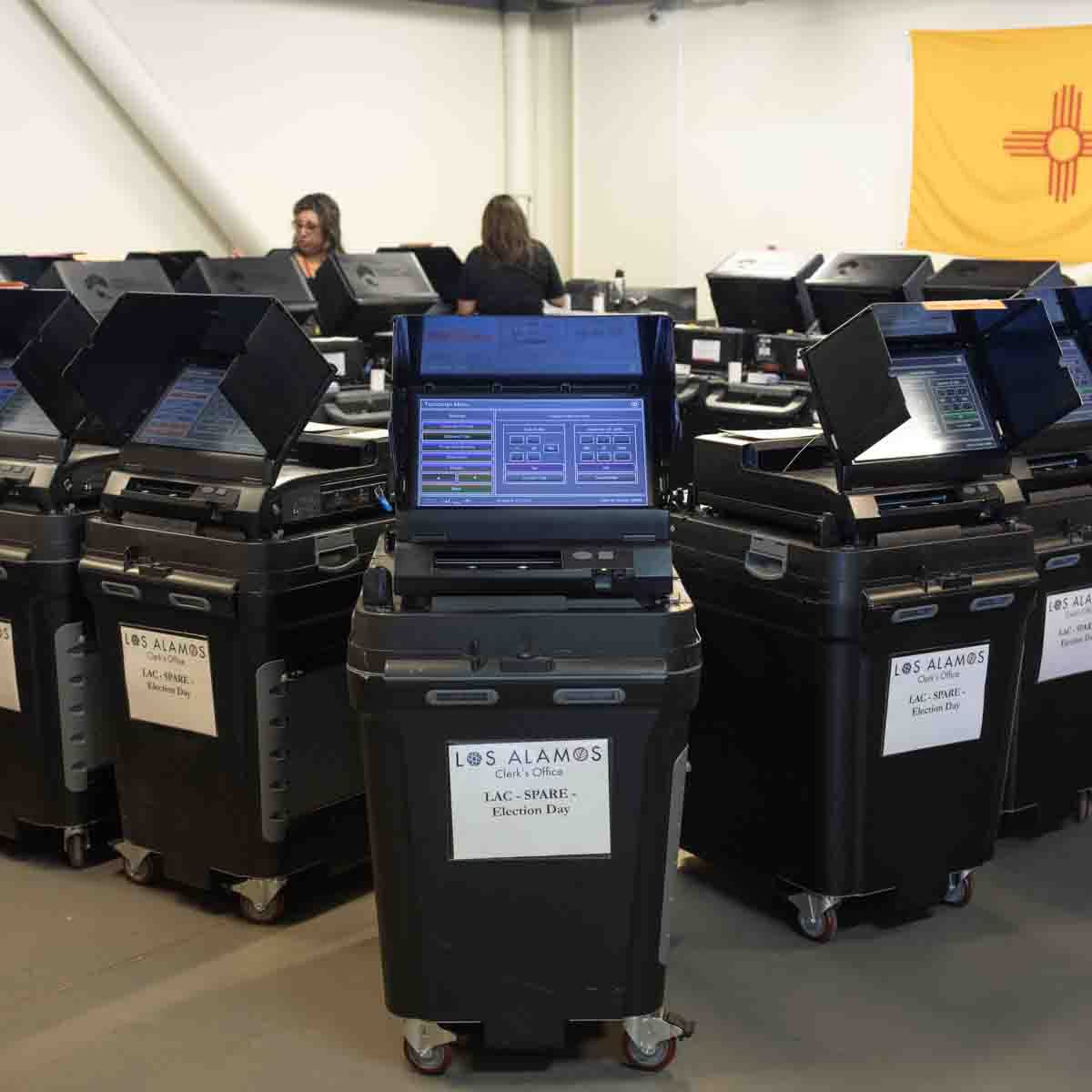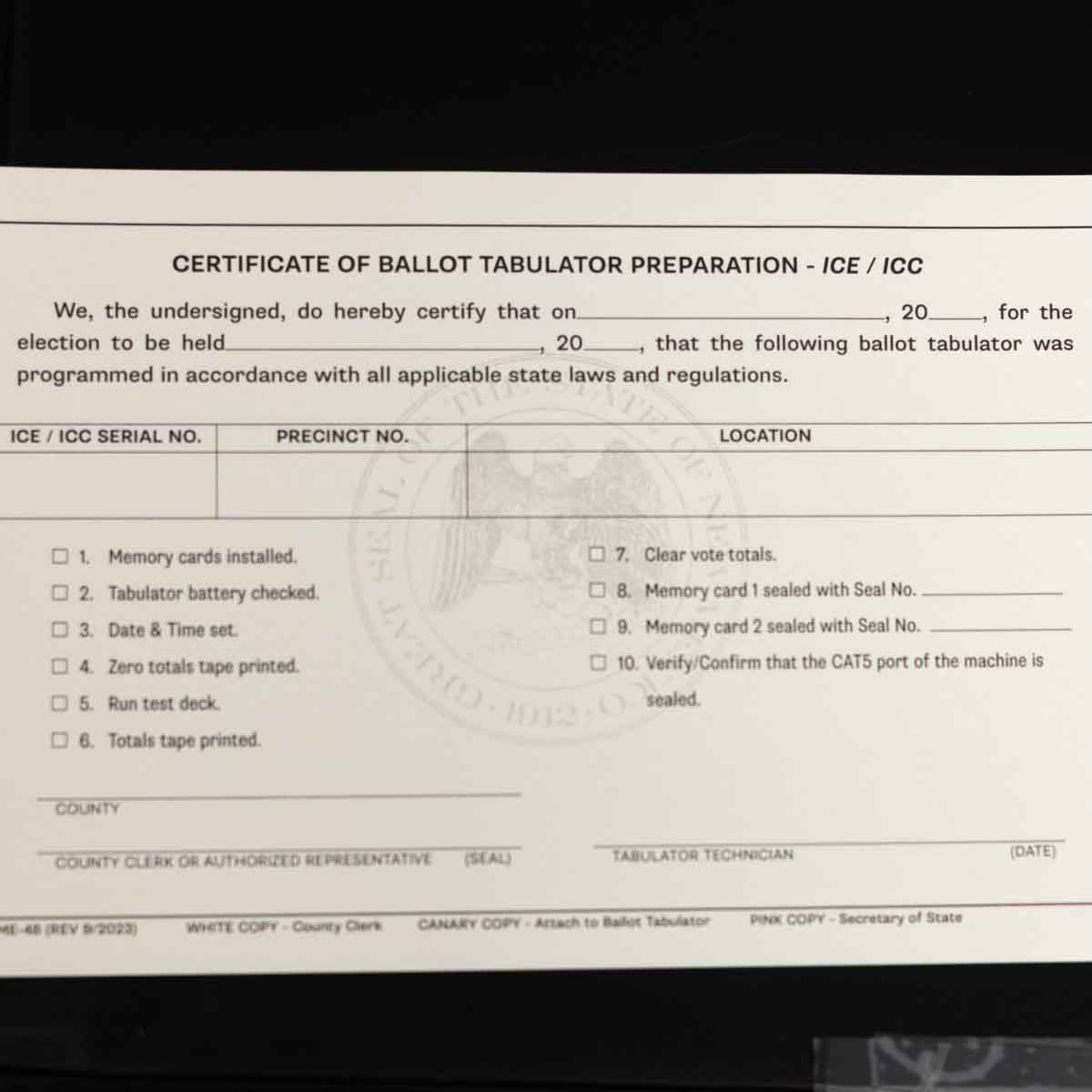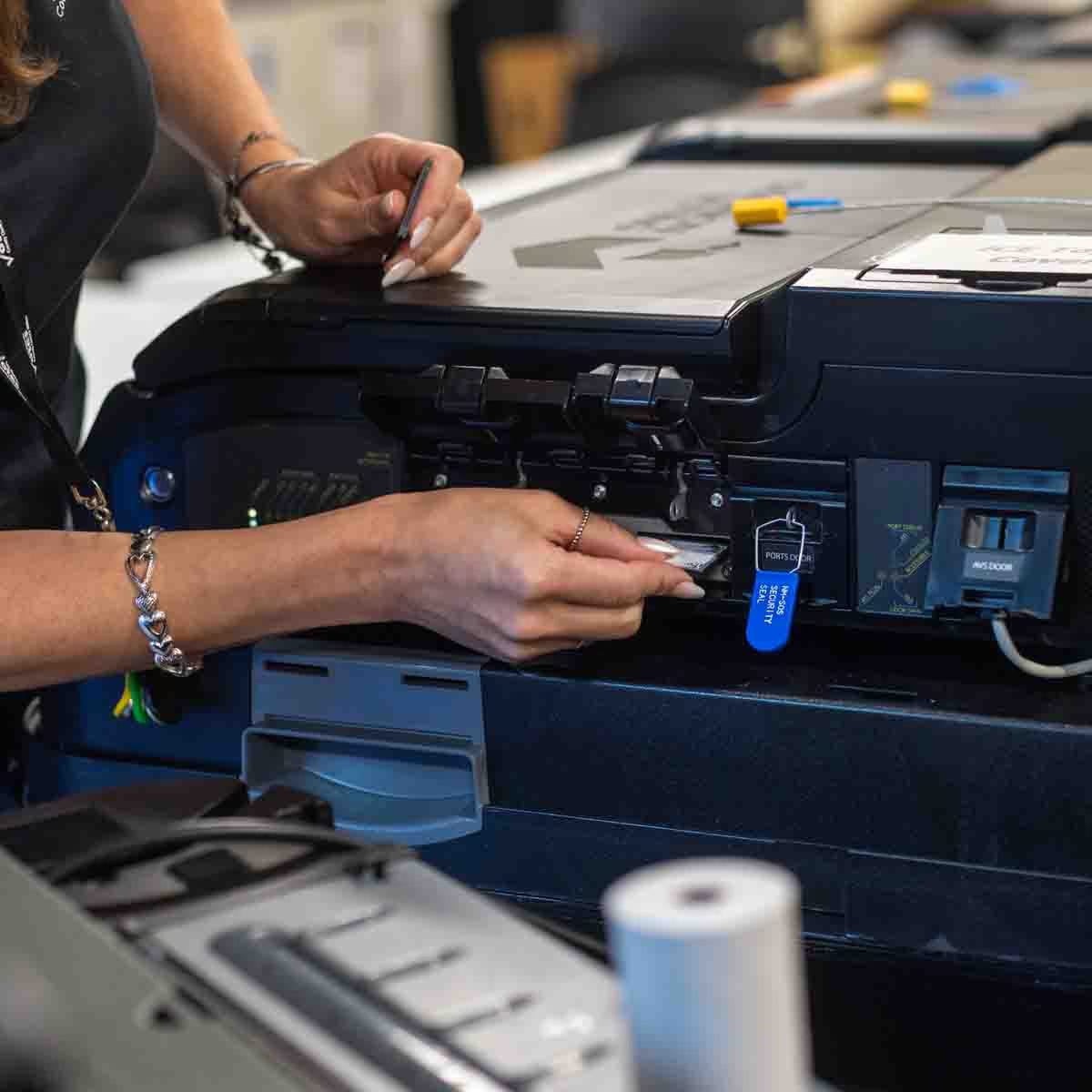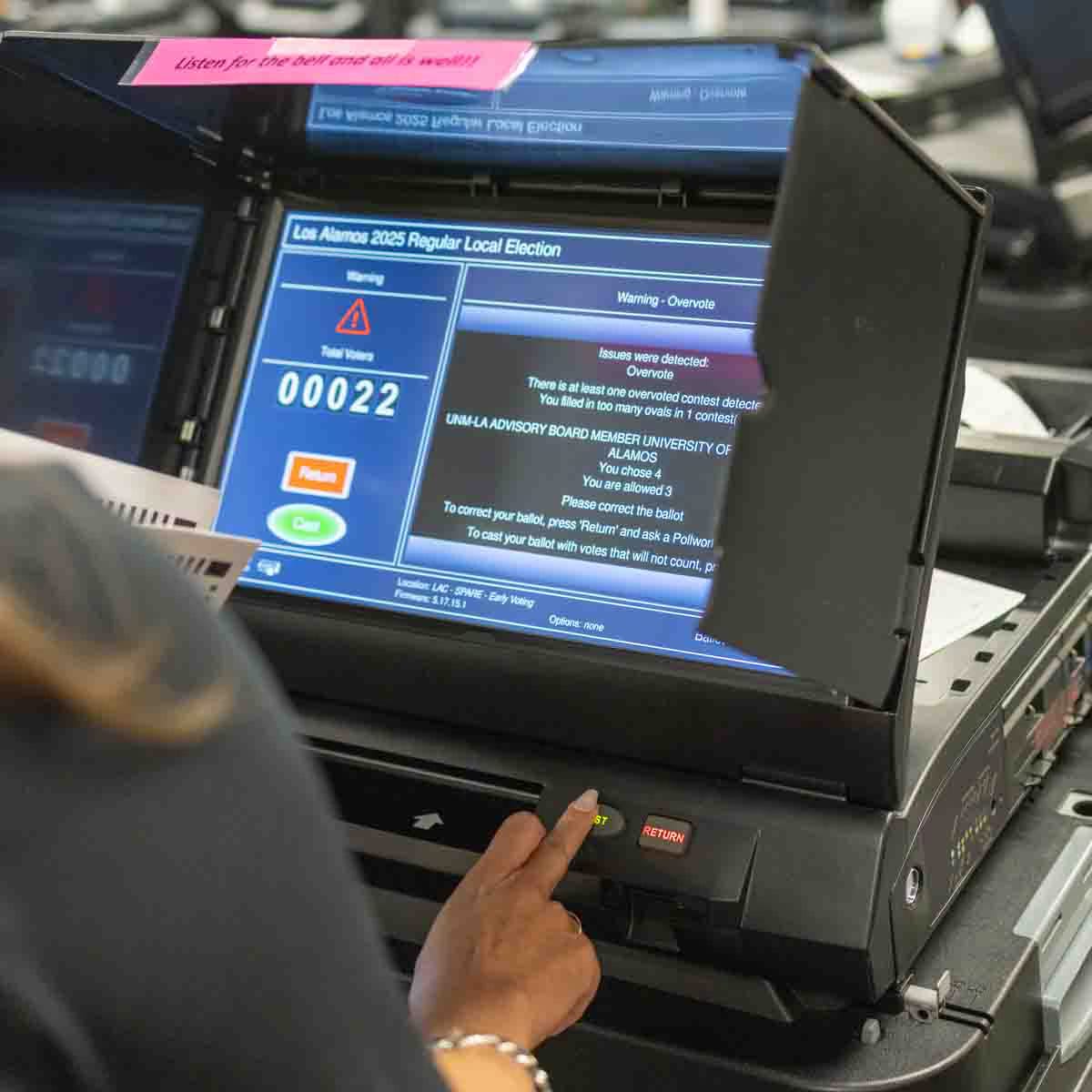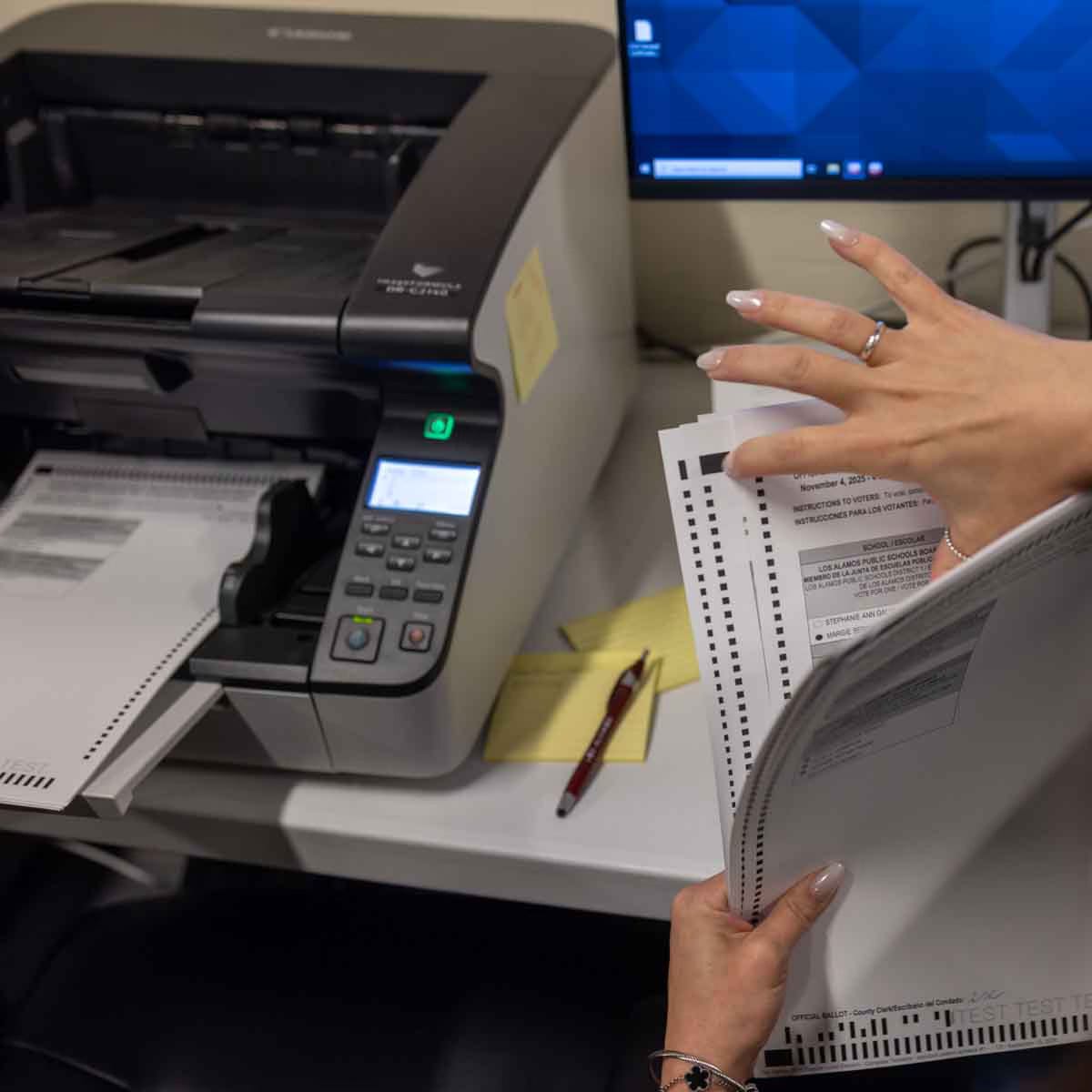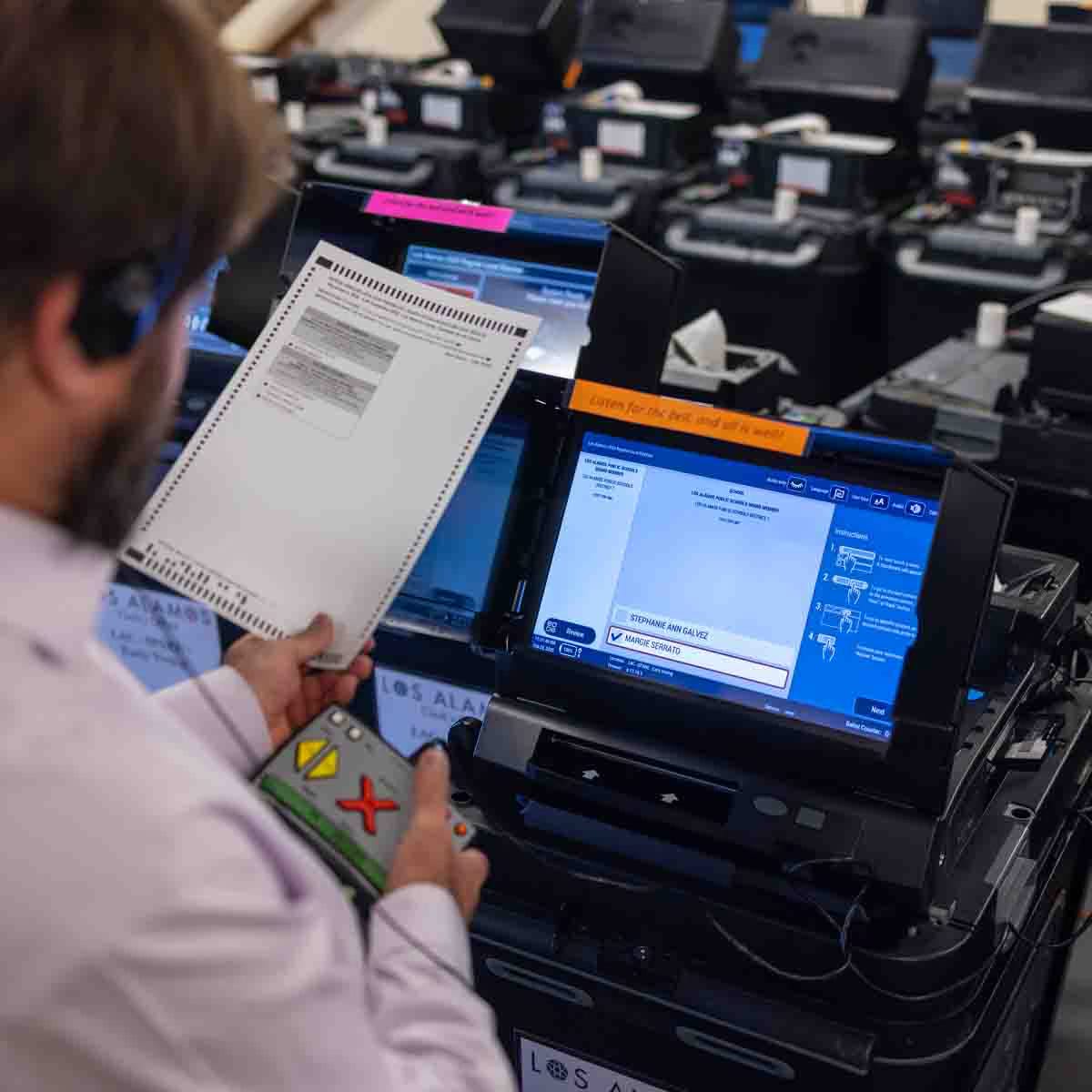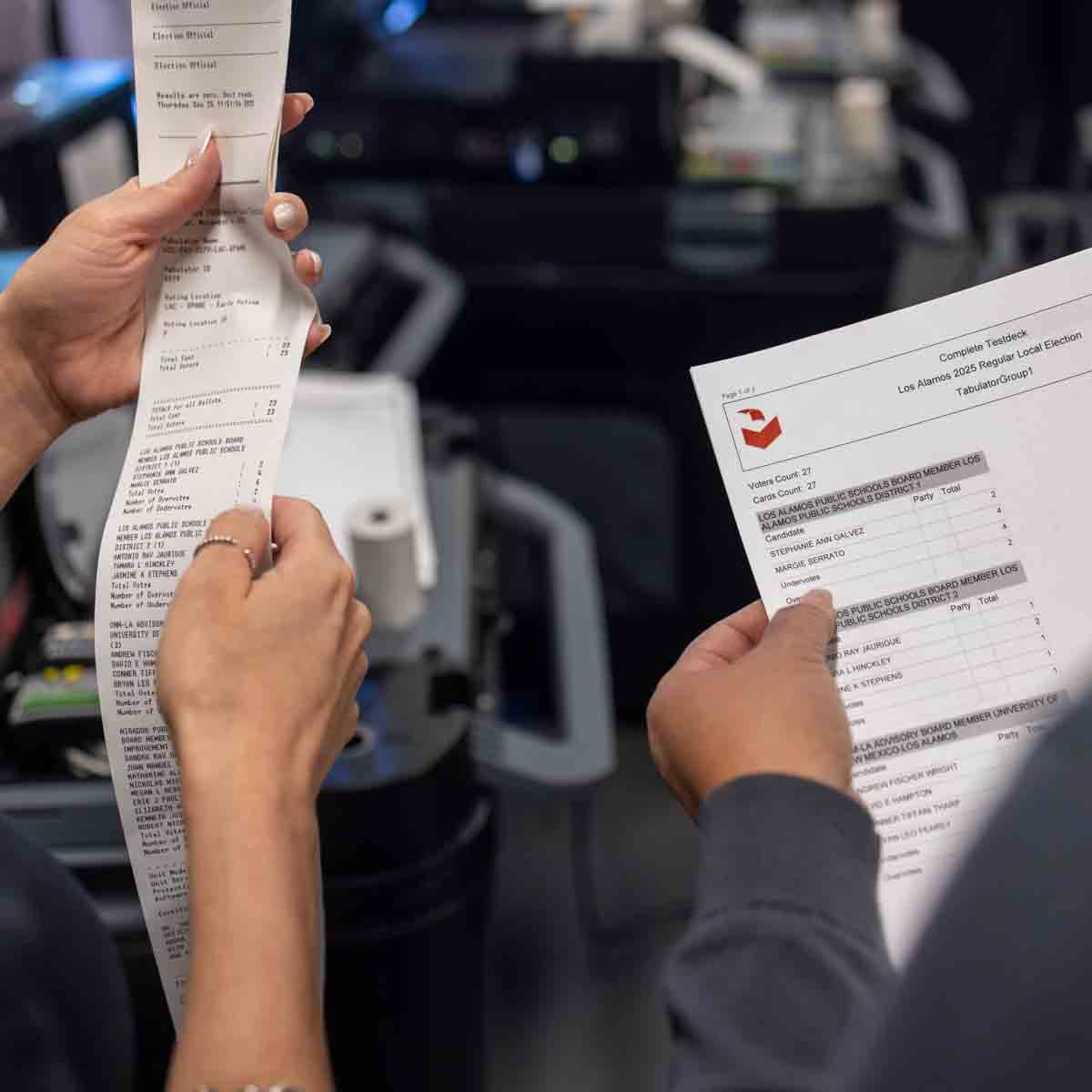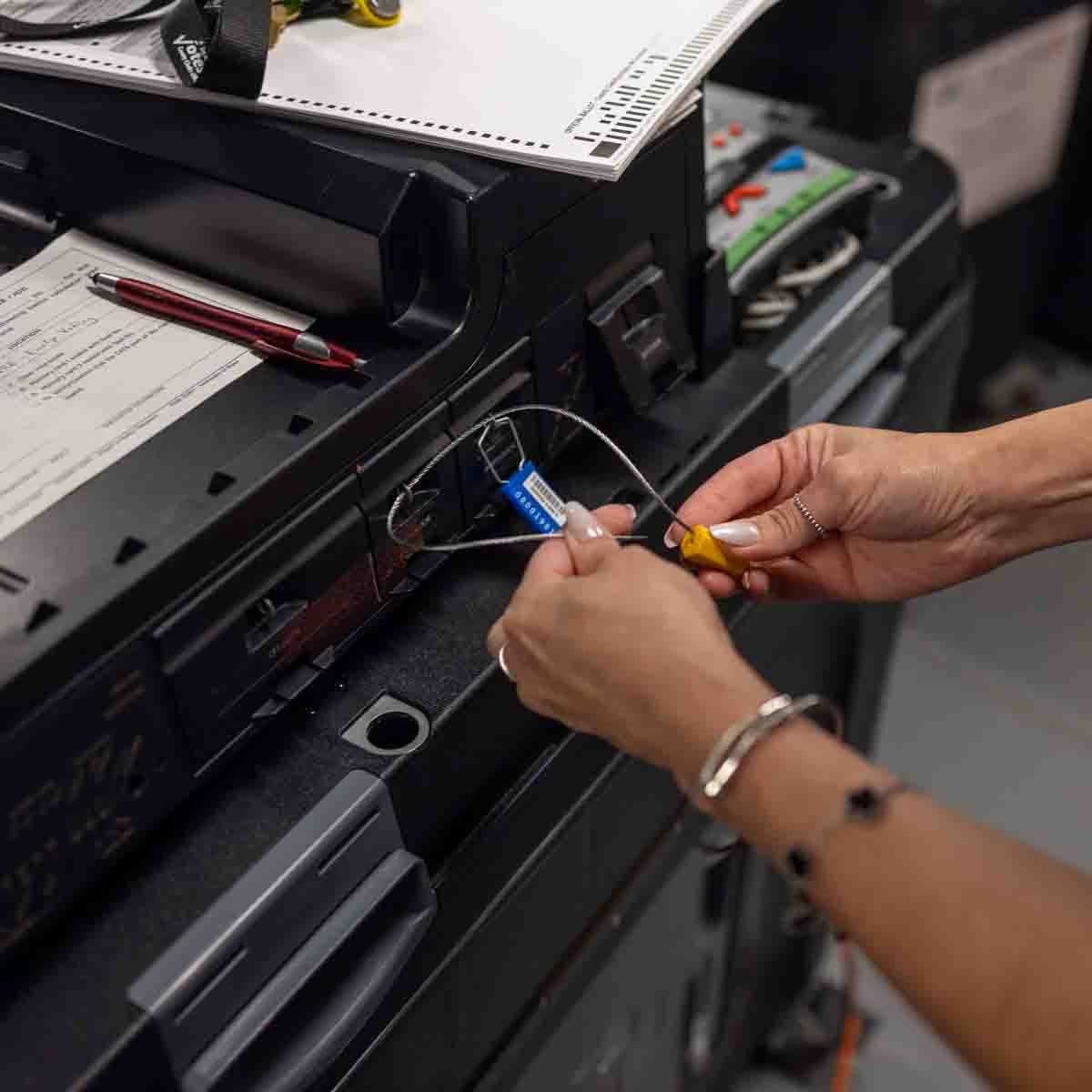How does your vote get counted anyway?
A look at Los Alamos County's voting machine certification process
Editors note: This story was updated with minor corrections at 7:44 pm on October 17 to clarify how and when absentee ballots are counted and where paper ballots are stored after counting.
On September 26, Boomtown tagged along as Los Alamos County Clerk Michael Redondo and his staff carried out the state-mandated voting machine certification process in preparation for the November 4 local election. Here’s a look inside that process.
Federal law gives each state the responsibility for conducting its own elections. In New Mexico, prior to each election, the county clerk must follow a process laid out in Article 11 of the Election Code. This includes giving a 21-day notice before an upcoming election, testing voting machines, and certifying that testing to the secretary of state.
The voting machines, which are manufactured by Dominion Voting Systems, are provided to each county by the New Mexico Secretary of State. Los Alamos has a number of in-person tabulator machines, as well as two absentee ballot scanning stations. The county’s preparation process follows a state-mandated checklist that ensures the hardware and software for each machine is functioning as required. (The recent sale of Dominion Voting Systems to Liberty Vote does not change the certification status of the existing machines already in use.)
All of the computers involved in the voting process are isolated from external networks (air gapped) to ensure a secure network that is not connected to the internet. For each machine, the ballot information, counting results, and audit logs are stored redundantly on a pair of memory cards.
After the polls close, the vote totals from each tabulating machine are printed and posted at the election location. One of the two memory cards from each machine is transported by a poll worker to the county clerk. Poll workers also remove the collected ballots from each machine, seal them in individual containers corresponding to each machine, and turn them over to the clerk for secure storage.
The second memory card is retained until any post-election audits. Those audits take place in two parts. First, election results are canvassed at the county level, then by the secretary of state’s office, and then the results are audited by an independent contractor before being forwarded to the New Mexico Board of Canvass to be made official.
The results of every independent post-election audit since 2004 are available on the secretary of state’s website.
After loading the election information, each machine counts a set of test ballots, and some contain intentional errors. During in-person voting, any issues detected by the scanner — a blank ballot, over-voting, or stray marks — are flagged for the voter to address prior to formally casting their ballot.
Absentee ballots received by mail are opened and counted by poll workers over the course of Election Day using a separate batch scanning system. The results are kept secret until the polls close. Any validation or marking errors on an absentee ballot are adjudicated by a team of multiple poll workers from different political parties who try to discern the voter’s intent.
Each tabulator machine for in-person voting also has a number of accessibility features to assist voters with visual and motor challenges to mark their ballots.
The scanned results of the test deck for each in-person machine are printed to paper tape and confirmed against the known results. The paper tape records are then signed and stored. During actual voting, the paper tape records information such as the time and the number of ballots cast, which every poll worker in a location must certify at the opening and closing of the poll.
After confirming the accuracy of each tabulating machine, the counter is reset to zero and tamper-indicating seals are applied. The machines are then stored securely until they’re delivered to the various county polling places prior to election day.
The county clerk’s staff and poll workers must all take an oath affirming that they will support the constitution of the United States and the constitution and laws of New Mexico, and that they will faithfully and impartially discharge the duties of the position. The election code specifies penalties for a variety of offenses from tampering with voting machines to false registration, with most penalties being felonies.
Election Day:
The 2025 regular election will be held on Tuesday, November 4. In-person voting will take place from 7 am to 7 pm, and registered Los Alamos voters may cast their ballots at any of the county’s polling places. A full list and map are available on the county’s website.
Early voting:
Early voting is open to all registered voters through Friday, October 17 at the Los Alamos Municipal Building from 8 am to 5 pm.
Starting October 18 through November 1, early voting is available from 8 am to 6 pm Monday through Saturday at the Los Alamos Municipal Building and White Rock Town Hall.
Absentee ballots must be physically received by the county clerk by 7 pm on November 4. They can be mailed or dropped in the secure ballot boxes that are available outside of Los Alamos or White Rock public libraries, as well as any open polling place.
References and resources:



